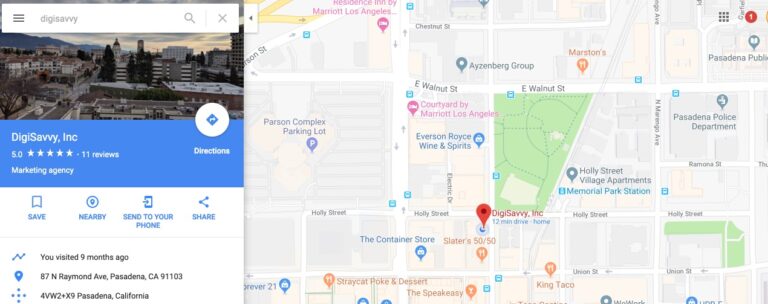How to Write Content for a Business Website

The elevator pitch. Do you have one? Do you need one? Elevator pitches annoy me because I feel like they do more to confuse someone so that they ask you more questions as opposed to just answering the initial question: “So, what do you do?”
That type of thing annoys me, which is why I was always bad at them. Over the years, I’ve heard countless elevator pitches from all sorts of folks from enthusiastic college students to C-level moguls, startup founders and more. The one thing that I appreciate about the elevator pitch is that, when done well, gets to the heart of how that person solves a problem or reveals what they love to do. And it gets to the heart quickly!
Where am I going with this?
I volunteer my time to consult with the Small Business Development Center one day a week. I’ve volunteered, now, for a little over a year. During this period, I’ve talked to a lot of early stage businesses about what they’re trying to do. The common theme is that they often feel overwhelmed when it comes to what they actually do.
That’s fairly commonplace, that feeling of not knowing what to pick. I advise these business owners to focus on what’s most important; it’s a great place to begin. I’ll take our clients through an exercise of talking about what makes them happy about what they do. I ask them about that first time they did “the thing” that they get paid to do. How did they feel? What did they think about? How did they know that this is what they wanted to do? Where does that spark come from?
It’s not about the dollars-per-hour you bill your customers, per se. It’s about the value that you deliver. Jim Rohn has a nifty thing he says:
We don t get paid for the hour; we get paid for the value we bring to the hour.
Think first about the value your business brings to each and every customer. If you write for a living, how does that writing empower the businesses you write for? Does it help your customer inspire their customers? If you sell clothing for a living, why should people buy from you? Is it because your clothing and fabric selection is unique? Does it provide comfort? Does it provide unmatched and unique style? Are your garments sourced ethically? These things matter to people. It’s the reason I patron locally owned coffee shops and restaurants whenever possible.
There’s value that comes from a product or service where the owner is truly invested and care.
What value do you “bring to the hour?”
Back to that elevator pitch
What if we turned the notion of the elevator pitch on its head a little bit? Instead of prepping how we talk about what we do as a means of introducing ourselves, what if we instead looked in the mirror and did that? Hokey? It sure is!! What is the elevator pitch that you would give to yourself?Look into that mirror and do it. Go on, I’ll be here when you get back… What did you come up with?
I did this exercise myself and became quickly annoyed that I didn’t have a good elevator pitch right away. This is what I landed on:
I build custom website solutions, along with digital content strategy, email marketing, and sales automation for business.
What do you think? It’s not the worst you’ve seen, right? The above pitch is at the core of what I do for my own clients and what I do for business owners at the SBDC.
Thinking about what’s important depends a lot on not only the value you provide to your clients and customers but also it depends on what you love to do. Everything truly starts with love and value. As long as you love and are passionate about what you do you have value nailed to your chest! Please forgive the horrifying imagery there. You know what I mean, though, right? Also getting to the source of whom you help is, um, helpful!
I Do this thing for that kind of business.
I always stress, get to the core of what you do and what you love and peel back those things that you are less thrilled with. I have found the things that drive revenue are the things that I enjoy doing most.
Whittling down what we do and who we do it for generally means one needs to draw…
A line in the sand
As an example, I will give you my “line in the sand.”
- I don’t take sub-contract work anymore unless I get access to the client, too. I want to be a part of all relevant client and project discussions. I need to know what the client expectations are and, if necessary, speak to them right then and there. Doing so avoids misunderstandings later.
- I don’t do “vanity projects” anymore. I don’t build something just to make something nice or to do “cool stuff.” A project is required to have an achievable goal. i.e. Your cool stuff request will increase visits by X and will generate x% more revenue per year. Let’s work toward something we’ll both be happy about.
- I don’t work beyond 6p.
- All work requires a signed agreement.
- I don’t respond to work-related text messages from clients.
- I don’t negotiate with myself.
- I only take meetings that have been scheduled.
- I never answer my personal phone during work hours (unless it’s me mum).
This list shifts from time to time, while I add more or take away from it. Rigidity isn’t the most important thing is, in fact, being flexible is the important thing.
Why do you need a line in the sand? You don’t, but I think it’s helpful for a business to have them. It eliminates the room for debate. If you don’t do a thing then that’s the end of the discussion. If you don’t do work for a specific type of business, then you can refer out. I have found, for myself, that when I do things I’m not comfortable with that I negotiated a lot with myself. Hence that line above about not negotiating with myself. I didn’t always understand that phrase, but I do now.
Keeping things simple
The best thing you can do is to keep things simple. We could all learn to live with a little less in our lives. In fact, for me, it has been freeing to accept that while I can’t control how much I have I can control how little I have. It helps. Stick to what matters most, what you love to do and your value. Also keep your content short and to the point (unlike this article). Eliminate points of confusion and debate by peeling away the things you don’t love or provide minimal value.
Featured image credit: Andrew Neel
Get Notified When We Publish New Content!
Join more than 2,500 people who get our marketing automation, business marketing, and WordPress news!
![[Series] Grow Your Business Online First Steps. Way of the Tortoise](https://digisavvy.com/wp-content/uploads/2016/05/way-of-the-tortoise-768x488.jpg)





